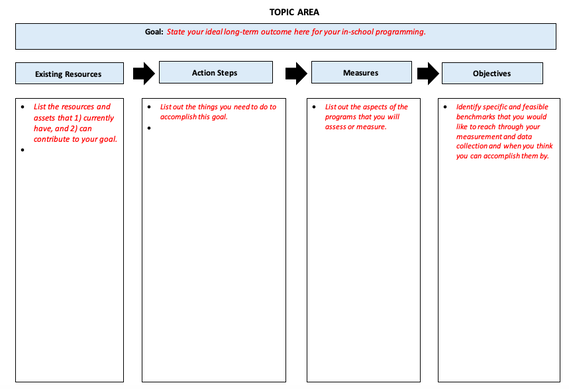This is an Eval Central archive copy, find the original at engagewithdata.com.
Working collaboratively to develop a logic model can be a unifying experience for teams, a way to get everyone on the same page about the work.
But what keeps your finished logic model from disappearing into the dark void of your computer’s file system, never to be found or opened again?
If you’ve been reading my blog for awhile, you may know where I’m going…
You can use your logic model to help design your team’s data tracking system!
Although people design them differently, logic models always have a column for either the measures that you’ll use to assess progress (as I have in my template below) or the immediate outputs that would occur as a result of your activities.
- Number of families attending school events
- Number of home visits conducted
- Percent of children whose families have engaged with the school in some way throughout the year
- Number of parent/family leaders
Your logic model is basically a cheat sheet to the data points you’ll want to track for your program!
So if you follow the steps in my free guide to tracking your engagement data, you’ll see that you’ve already answered some of the questions in Step 1 — why you’re tracking the data.
I don’t know about you, but I think that identifying the purpose behind each part of our work is often the hardest. But since you’ve already connected your measures to your short- and long-term goals, you’re ahead of the game!
With your logic model in hand, you’ll be ready to tackle the rest of the questions with ease and start tracking.
If you haven’t gotten your hands on my free guide, use the form below to get your copy!
